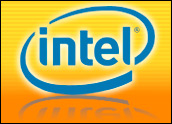
Intel on Tuesday demonstrated the first chip based on its Larrabee architecture for graphics-centric coprocessors.
It held the demonstration at the Intel Developer Forum, which is being held in San Francisco through Thursday.
The chip giant also told attendees of its future plans and launched the Intel Atom Developer Program.
About Larrabee
Larrabee is a multi-core microarchitecture developed for compute- and memory-intensive applications such as PC games, as well as high-performance computing applications such as image processing, simulation, and medical and financial analytics.
The Larrabee architecture includes a high-performance, wide Single Instruction, Multiple Data (SIMD) vector processing unit and a new set of vector instructions, including integer and floating point arithmetic, vector memory operations and conditional instructions.
SIMD is a technique employed to achieve data level parallelism. It was first used in supercomputers such as the Cray Thinking Machines CM-1 and CM-2.
Larrabee’s multi-core architecture is critical to its abilities. “Single-core architectures appear unable to scale to meet the demands of today’s most challenging applications,” Nvidia spokesperson Hector Marinez told TechNewsWorld. Nvidia specializes in graphics processors.
However, multi-core processing is not a new concept. “Nvidia invented the CUDA parallel computing architecture that is now shipping in over 100 million GeForce, Ion, Quadro and Tesla GPUs (graphical processing units), representing a significant installed base for application developers,” Marinez said.
Intel will enhance key software to support the Larrabee architecture. Industry APIs (application programming interfaces) such as DirectX and OpenGL will be supported on Larrabee-based products.
More on Larrabee
The Larrabee architecture focuses heavily on programmability. This lets programmers implement a variety of 3-D graphics pipelines such as rasterization, volumetric rendering or ray tracing.
“Unlike traditional graphic processing units, which have a mixture of general-purpose processing capabilities and some fixed-function capability for dedicated graphics processing, Larrabee is going to be much more software based,” Dave Nalasco, senior technical marketing manager at Intel arch-rival Advanced Micro Devices (AMD) told TechNewsWorld.
Larrabee products are scheduled for launch next year. The first Larrabee products will be graphics cards, Intel said. Eventually, the Larrabee architecture will be integrated into processors along with other technologies.
Although Larrabee will eventually be incorporated into processors, that won’t impact Nvidia’s sales, Marinez maintained. “Our historical core business of providing graphics processors for the majority of the world’s desktop, notebook and workstation computers remains strong,” he explained. “There remains an insatiable demand for better and faster GPUs that can provide the most innovative and entertaining possible user experiences.”
Larrabee’s success is open to question. “Intel has promised great graphics repeatedly since the 1990s, so I’m a little jaded here,” Rob Enderle, principal analyst at the Enderle Group, told TechNewsWorld. However, it’s still too early to tell whether the architecture will garner support from the gaming or professional graphics sectors, or the Microsoft, Apple or Linux communities, he said.
Where’s Larrabee Going?
Sean Maloney, executive vice president and general manager of the Intel Architecture Group demonstrated a Larrabee chip at the IDF and said key developers have already received development systems.
The demonstration consisted of a real-time ray-traced version of the popular game “Quake Wars: Enemy Territory” running on Larrabee and Intel’s next-generation gaming processor, codenamed “Gulftown,” which will carry the Core brand.
The demo, however, did not appear to earn praise from graphics mainstay Nvidia. “We’ve been hearing the demo was unimpressive,” Nvidia’s Marinez said.
That could be because Intel’s using ray tracing, according to AMD’s Nalasco. “What Intel did with ray tracing is nowhere near what GPUs today can do with conventional methods such as rasterizing,” Nalasco said. “The algorithms for ray tracing are still in the nascent stage.”
For its part, AMD is hedging its bets, offering hybrid processors that do both rasterizing and ray tracing. It launched its first line of hybrids, the Radeon HD 5800 series, earlier this week. “We believe the way forward is to use heterogeneous computing — have a chip with a combination of a flexible or multiple CPU core and a highly optimized GPU core that can do raw brute-force graphics and math processing,” Nalasco explained.
Radeon HD 5800 products consist of GPUs with traditional GPU fixed functionalities and a high-powered processing core that is rated at up to 2.7 teraflops. “It’s the fastest processor developed in terms of raw compute power,” Nalasco said.
Intel did not respond to calls seeking comment by press time.
Intel’s Other Plans
Maloney also demonstrated the “Westmere” processor at IDF. This is the first 32-nanometer processor from Intel, and it is scheduled to ship in Q4.
The chip giant is now working on an even smaller processor — 22 nanometers — according to Intel president and CEO Paul Otellini. This is on track for production in the second half of 2011.
Intel recently introduced a second architecture based on its Atom processor that will focus on Internet-connected devices, Otellini added. A new core for this architecture will come out every two years on different silicon technology.
These new cores will be used in SoCs, or systems-on-a-chip. A SOC is essentially a chip that integrates multiple functions such as digital, analog, mix-signal and often radio-frequency functions.
SOCs are a very big investment for Intel, Otellini said. Intel will also let customers embed their own intellectual property onto an Atom SOC, among other things. “New rules, new markets,” Otellini said.
Finally, Intel announced the Atom Developer Program, aimed at creating new programs running on Atom and porting existing programs over to the Atom architecture. Intel will develop tools for this, Otellini said.
Products based on the Atom architecture will include netbooks, handhelds and consumer electronics devices, Otellini said.
Intel’s Atom architecture faces competition from AMD’s Fusion line and Nvidia’s Tegra, Enderle said. “Here Intel may be lagging in some areas — Tegra is at the core of the new Zune, for instance,” he added. “But it’s still an open race, and Intel is the largest player in the market.”





















































